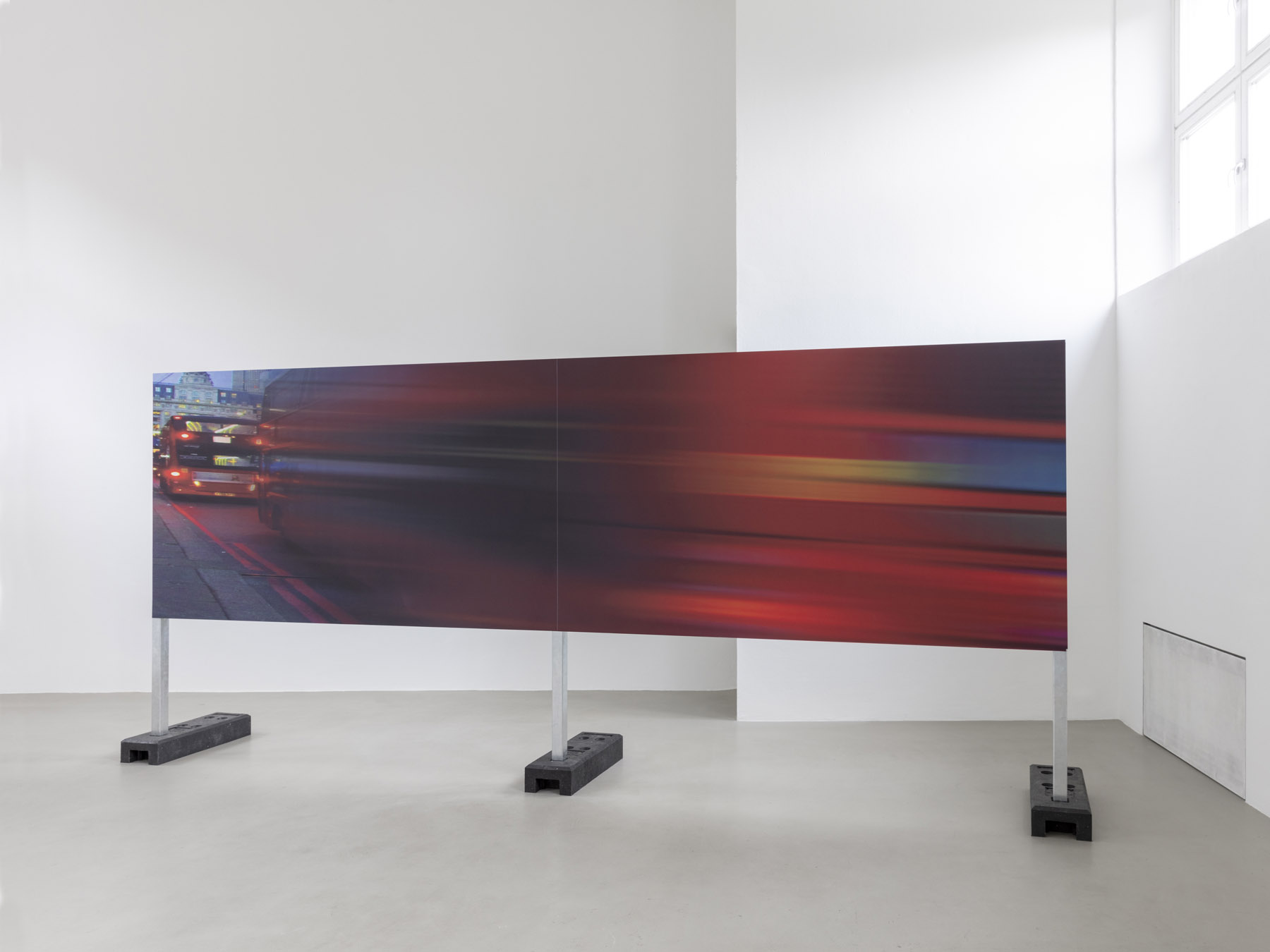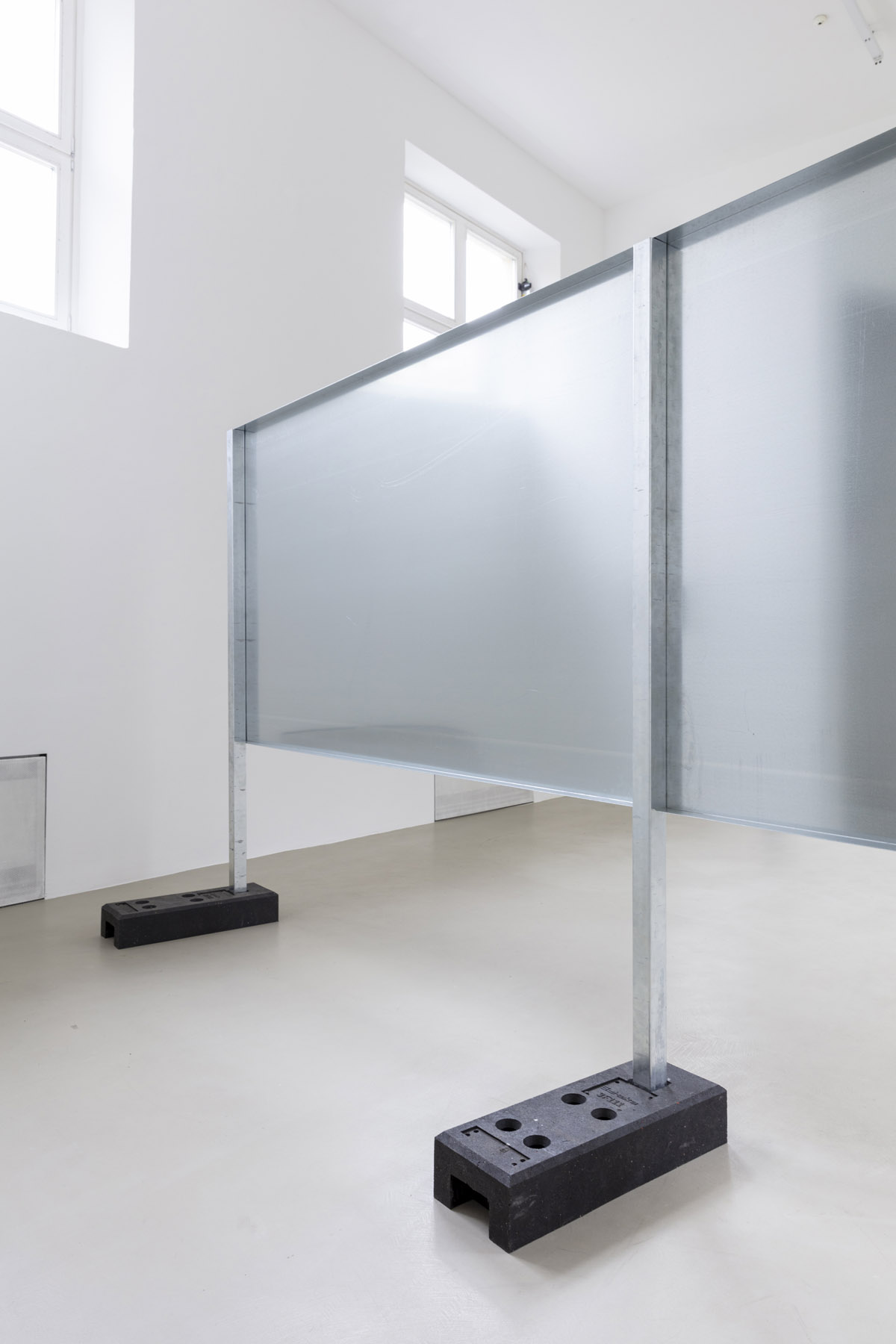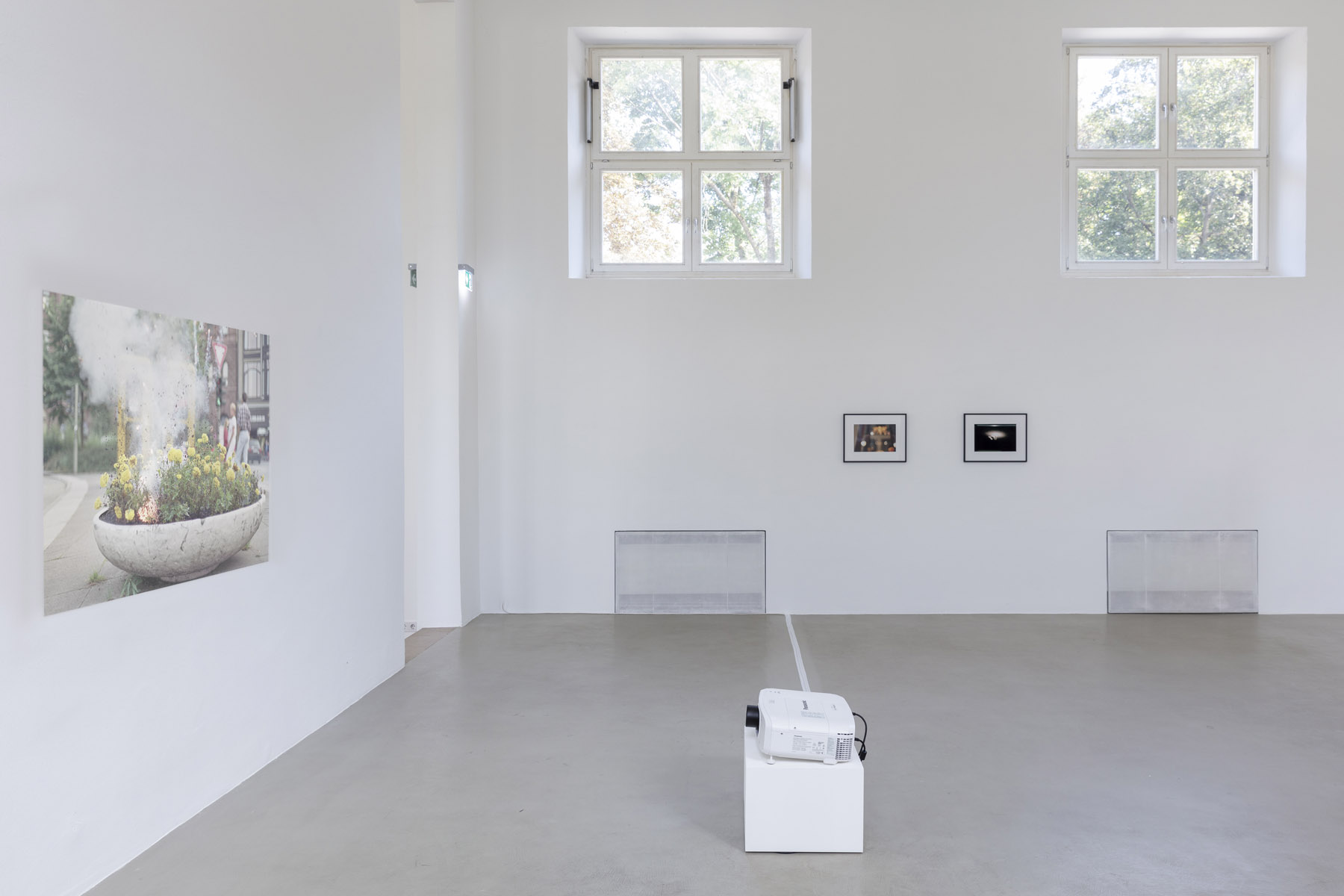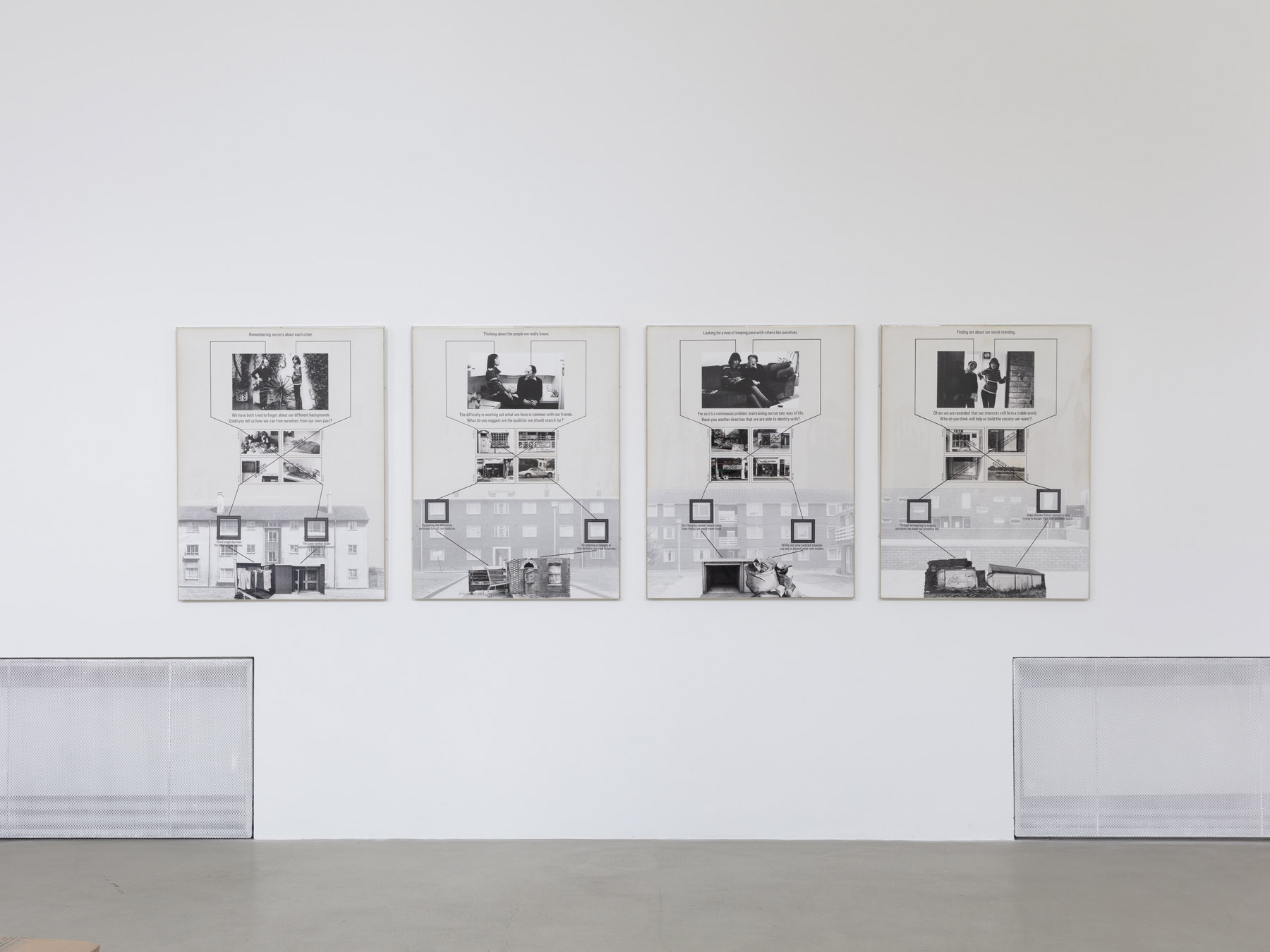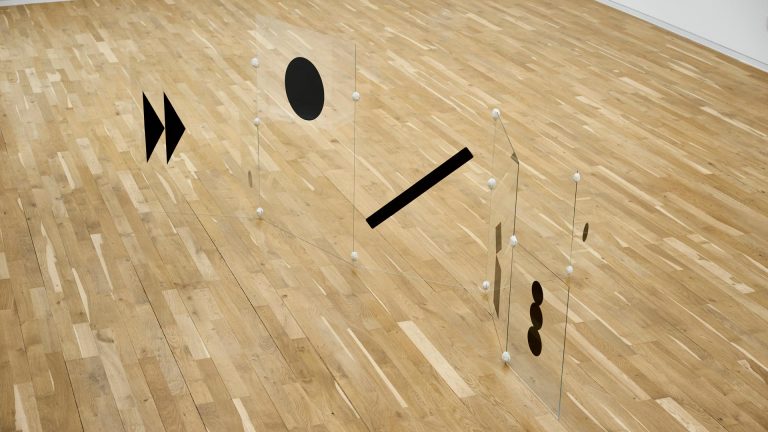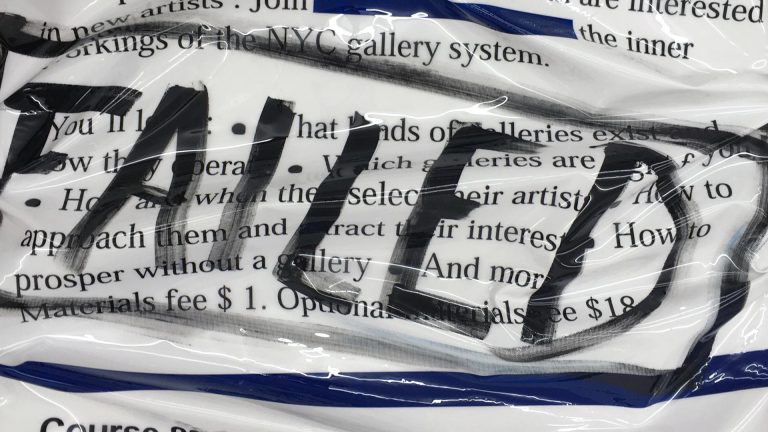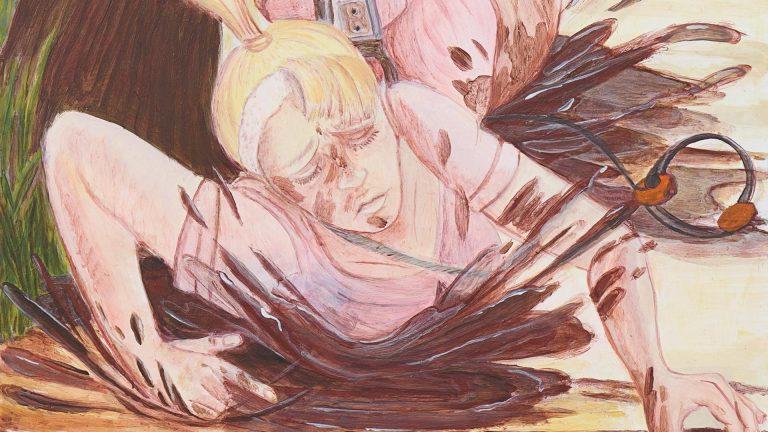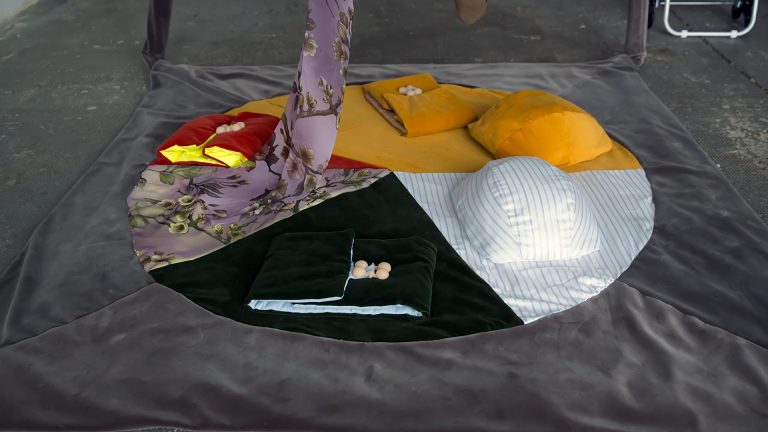Artists: Adrian Paci, Angharad Williams, Annette Wehrmann, Coop Fund, Gili Tal, Guillaume Maraud, Josef Kramhöller, Laura Ziegler & Stephan Janitzky, Lise Soskolne, Matt Hilvers, Stephen Willats
Film program with: Ayo Akingbade, Linda Goode Bryant & Laura Poitras, Agnès Varda, Barbara Kopple, Berwick St Collective, by Nadja Abt with Lucrecia Martel, by Simon Lässig with Darcy Lange and Ermanno Olmi, etc.
Accompanying program with: Cana Bilir-Meier, Phasenweise nicht produktiv (with contributions by Maximiliane Baumgartner, Vera Brosch, Eva Burkhardt, Luca Daberto, Sophia Köhler, Karolin Meunier, et al.), Tirdad Zolghadr, Ulla Rossek, etc.
Exhibition title: Not Working (Artistic Production and Matters of Class)
Venue: Kunstverein München, Munich, Germany
Date: September 12 – November 22, 2020
Photography: All images copyright and courtesy of the artist and © Kunstverein München
This fall, Kunstverein München presents Not Working – Artistic production and matters of class, a project that brings together artists, theorists, and writers who in their work examine the interdependence of artistic production and social class. Every form, including the artistic, is ground for the negotiation of class relations. A formal language always surpasses the formal: it can be read in relation to privilege and economic contexts that can inscribe and ultimately permeate materials, thematic concerns, and modes of (re-)presentation.
The complex structures and substantial rise of social inequalities—particularly visible in light of the current pandemic—have given the concept of class a wide range of connotations. In sociological terms, class can be understood as the ascription of individuals to specific social groupings, which are characterized by objective elements such as income. Beyond the pure economics, the concept also has symbolic significance. When speaking of class today, it is usually in reference to its historically white and predominantly male constitution. But what has become apparent is that categories of “race” and “gender” are deeply inherent to concepts of class. In fact, these aspects are the determining elements of class relations.
The works on view are characterized by a consciousness of how background, education, and artistic practice are inevitably entangled. They hence allow for a consideration of these categories in relation to the actual lived realities of their producers. However, why does contemporary art, in many cases, continue to be presented against the backdrop of supposed “class homogeneity;” remaining complicit in the reproduction and masking of existing conditions which it often claims to overcome. The term “class” is strikingly absent in discourses that assert political relevance and critical potential. When it does become the subject, disparities and inequalities are too often clumsily reproduced in the same context. The title Not Working addresses the often glorified precarity inherent to the notion of artists as social figures, and the cliché that economic regulations do not apply to their form of work. Moreover, the title outlines aspects of a dysfunctional system, which is built on the precarization of most of its producers.
Like other art associations, Kunstverein München was established in the early 19th century, initially serving as a cultural forum for the emergent bourgeoisie. Consequently, it was not only a space for the presentation of art, but for the formation of a “society of taste.” Kunstverein München also forms part of one of Germany’s most expensive urban contexts resulting in a cityscape increasingly unable to provide an environment conducive to cultural production. This context makes it a destined place to discuss the entanglements of economics, representation and the production of art. After all, Kunstvereine, as institutions, are a rich resource of historical information on the motivations of their protagonists, and how these were governed by a bourgeois conception of art, supposedly autonomous of social factors. The exhibition—along with its comprehensive film and accompanying program and the publication—aims to reflect upon how social class affects artistic production, and thus to encourage debate about these interdependent subjects.
Installation view: Stephen Willats, Trying To Forget Where We Came From, 1977, and Josef Kramhöller, Six works from the series Untitled (Fingerprint), 1995, in Not Working – Artistic production and matters of class, Kunstverein München, 2020. Courtesy Kunstverein München e.V.; photo: Sebastian Kissel.
Exhibition view: Not Working – Artistic production and matters of class, Kunstverein München, 2020. Courtesy Kunstverein München e.V.; photo: Sebastian Kissel.
Installation view: Lise Soskolne, Characters, 1999, and Gili Tal, The Grapefruit Trees’ Small, Beautiful Blossom Looked Like Stars, 2020, in Not Working – Artistic production and matters of class, Kunstverein München, 2020. Courtesy Kunstverein München e.V.; photo: Sebastian Kissel.
Installation view: Annette Wehrmann, Blumensprengungen, 1991-95, and Josef Kramhöller, Two works from the series Untitled (Fingerprint), 1995, in Not Working – Artistic production and matters of class, Kunstverein München, 2020. Courtesy Kunstverein München e.V.; photo: Sebastian Kissel.
Installation view: Annette Wehrmann, DSB für die Zukunft, 1993-96, in Not Working – Artistic production and matters of class, Kunstverein München, 2020. Courtesy Kunstverein München e.V.; photo: Sebastian Kissel.
Exhibition view: Laura Ziegler and Stephan Janitzky in Not Working – Artistic production and matters of class, Kunstverein München, 2020. Courtesy Kunstverein München e.V.; photo: Sebastian Kissel.
Installation view: Matt Hilvers, Decadance, 2009-2019, in Not Working – Artistic production and matters of class, Kunstverein München, 2020. Courtesy Kunstverein München e.V.; photo: Sebastian Kissel.
Installation view: Angharad Williams, Nobody wins 2020, in Not Working – Artistic production and matters of class, Kunstverein München, 2020. Courtesy Kunstverein München e.V.; photo: Sebastian Kissel.
Installation view: Angharad Williams, My First Suit, 2020, in Not Working – Artistic production and matters of class, Kunstverein München, 2020. Courtesy Kunstverein München e.V.; photo: Sebastian Kissel
Detail: Angharad Williams, My First Suit, 2020, in Not Working – Artistic production and matters of class, Kunstverein München, 2020. Courtesy Kunstverein München e.V.; photo: Sebastian Kissel
Detail: Angharad Williams, My First Suit, 2020, in Not Working – Artistic production and matters of class, Kunstverein München, 2020. Courtesy Kunstverein München e.V.; photo: Sebastian Kissel
Detail: Angharad Williams, My First Suit, 2020, in Not Working – Artistic production and matters of class, Kunstverein München, 2020. Courtesy Kunstverein München e.V.; photo: Sebastian Kissel
Installation view: Annette Wehrmann, Blumensprengungen, 1991-95, und Josef Kramhöller, Two works from the series Untitled (Fingerprint), 1995, in Not Working – Artistic production and matters of class, Kunstverein München, 2020. Courtesy Kunstverein München e.V.; photo: Sebastian Kissel.
Installation view: Annette Wehrmann, Blumensprengungen, 1991-95, in Not Working – Artistic production and matters of class, Kunstverein München, 2020. Courtesy Kunstverein München e.V.; photo: Sebastian Kissel.
Detail: Annette Wehrmann, Blumensprengungen, 1991-95, in Not Working – Artistic production and matters of class, Kunstverein München, 2020. Courtesy Kunstverein München e.V.; photo: Sebastian Kissel.
Detail: Annette Wehrmann, Blumensprengungen, 1991-95, in Not Working – Artistic production and matters of class, Kunstverein München, 2020. Courtesy Kunstverein München e.V.; photo: Sebastian Kissel.
Installation view: Annette Wehrmann, DSB für die Zukunft, 1993-96, in Not Working – Artistic production and matters of class, Kunstverein München, 2020. Courtesy Kunstverein München e.V.; photo: Sebastian Kissel.
Installation view: Annette Wehrmann, DSB für die Zukunft, 1993-96, in Not Working – Artistic production and matters of class, Kunstverein München, 2020. Courtesy Kunstverein München e.V.; photo: Sebastian Kissel.
Detail: Annette Wehrmann, DSB für die Zukunft, 1993-96, in Not Working – Artistic production and matters of class, Kunstverein München, 2020. Courtesy Kunstverein München e.V.; photo: Sebastian Kissel.
Detail: Annette Wehrmann, DSB für die Zukunft, 1993-96, and Stephen Willats, Brentford Towers, 1985, in Not Working – Artistic production and matters of class, Kunstverein München, 2020. Courtesy Kunstverein München e.V.; photo: Sebastian Kissel.
Installation view: Annette Wehrmann, DSB für die Zukunft, 1993-96, in Not Working – Artistic production and matters of class, Kunstverein München, 2020. Courtesy Kunstverein München e.V
Installation view: Lise Soskolne, Characters, 1999, and Gili Tal, The Grapefruit Trees’ Small, Beautiful Blossom Looked Like Stars, 2020, in Not Working – Artistic production and matters of class, Kunstverein München, 2020. Courtesy Kunstverein München e.V.; photo: Sebastian Kissel.
Installation view: Gili Tal, The Grapefruit Trees’ Small, Beautiful Blossom Looked Like Stars, 2020, in Not Working – Artistic production and matters of class, Kunstverein München, 2020. Courtesy Kunstverein München e.V.; photo: Sebastian Kissel.
Detail: Gili Tal, The Grapefruit Trees’ Small, Beautiful Blossom Looked Like Stars, 2020, in Not Working – Artistic production and matters of class, Kunstverein München, 2020. Courtesy Kunstverein München e.V.; photo: Sebastian Kissel.
Installation view: Gili Tal, The Grapefruit Trees’ Small, Beautiful Blossom Looked Like Stars, 2020, in Not Working – Artistic production and matters of class, Kunstverein München, 2020. Courtesy Kunstverein München e.V.; photo: Sebastian Kissel.
Installation view: Gili Tal, The Grapefruit Trees’ Small, Beautiful Blossom Looked Like Stars, 2020, in Not Working – Artistic production and matters of class, Kunstverein München, 2020. Courtesy Kunstverein München e.V.; photo: Sebastian Kissel.
Installation view: Guillaume Maraud, “12.09. – 22.11.2020“ Public consultation, 2020, in Not Working – Artistic production and matters of class, Kunstverein München, 2020. Courtesy Kunstverein München e.V.; photo: Sebastian Kissel.
Detail: Guillaume Maraud, “12.09. – 22.11.2020“ Public consultation, 2020, in Not Working – Artistic production and matters of class, Kunstverein München, 2020. Courtesy Kunstverein München e.V.; photo: Sebastian Kissel.
Installation view: Josef Kramhöller, Six works from the series Untitled (Fingerprint), 1995, in Not Working – Artistic production and matters of class, Kunstverein München, 2020. Courtesy Kunstverein München e.V.; photo: Sebastian Kissel.
Installation view: Josef Kramhöller, Five works from the series Untitled (Fingerprint), 1995, in Not Working – Artistic production and matters of class, Kunstverein München, 2020. Courtesy Kunstverein München e.V.; photo: Sebastian Kissel.
Installation view: Stephen Willats, Trying To Forget Where We Came From, 1977, and Josef Kramhöller, Six works from the series Untitled (Fingerprint), 1995, in Not Working – Artistic production and matters of class, Kunstverein München, 2020. Courtesy Kunstverein München e.V.; photo: Sebastian Kissel.
Installation view: Josef Kramhäller, Untitled (Social Stairway), 1999, in Not Working – Artistic production and matters of class, Kunstverein München, 2020. Courtesy Kunstverein München e.V.; photo: Sebastian Kissel.
Installation view: Josef Kramhöller, Two works from the series Untitled (Fingerprint), 1995, in Not Working – Artistic production and matters of class, Kunstverein München, 2020. Courtesy Kunstverein München e.V.; photo: Sebastian Kissel.
Installation view: Annette Wehrmann, Blumensprengungen, 1991-95, and Josef Kramhöller, Two works from the series Untitled (Fingerprint), 1995, in Not Working – Artistic production and matters of class, Kunstverein München, 2020. Courtesy Kunstverein München e.V.; photo: Sebastian Kissel.
Installation view: Josef Kramhöller, Two works from the series Untitled (Fingerprint), 1995, and Josef Kramhöller, Untitled, 1999, in Not Working – Artistic production and matters of class, Kunstverein München, 2020. Courtesy Kunstverein München e.V.; photo: Sebastian Kissel.
Exhibition view: Laura Ziegler and Stephan Janitzky in Not Working – Artistic production and matters of class, Kunstverein München, 2020. Courtesy Kunstverein München e.V.; photo: Sebastian Kissel.
Exhibition view: Laura Ziegler and Stephan Janitzky in Not Working – Artistic production and matters of class, Kunstverein München, 2020. Courtesy Kunstverein München e.V.; photo: Sebastian Kissel.
Detail: Laura Ziegler, Aurel Moussa and Frederick Rehms, Brueghels Arschkriecher, 2020, in Not Working – Artistic production and matters of class, Kunstverein München, 2020. Courtesy Kunstverein München e.V.; photo: Sebastian Kissel.
Detail: Laura Ziegler, After the sausage riots in 1919, Hamburg, 2020, in Not Working – Artistic production and matters of class, Kunstverein München, 2020. Courtesy Kunstverein München e.V.; photo: Sebastian Kissel.
Detail: Laura Ziegler, After the sausage riots in 1919, Hamburg, 2020, in Not Working – Artistic production and matters of class, Kunstverein München, 2020. Courtesy Kunstverein München e.V.; photo: Sebastian Kissel.
Detail: Laura Ziegler, Frisur, 2020, in Not Working – Artistic production and matters of class, Kunstverein München, 2020. Courtesy Kunstverein München e.V.; photo: Sebastian Kissel.
Detail: Laura Ziegler, Aurel Moussa and Frederick Rehms, Brueghels Arschkriecher, 2020, in Not Working – Artistic production and matters of class, Kunstverein München, 2020. Courtesy Kunstverein München e.V.; photo: Sebastian Kissel.
Detail: Laura Ziegler, Aurel Moussa and Frederick Rehms, Brueghels Arschkriecher, 2020, in Not Working – Artistic production and matters of class, Kunstverein München, 2020. Courtesy Kunstverein München e.V.; photo: Sebastian Kissel.
Installation view: Lise Soskolne, Characters, 1999, in Not Working – Artistic production and matters of class, Kunstverein München, 2020. Courtesy Kunstverein München e.V.; photo: Sebastian Kissel.
Installation view: Lise Soskolne, Characters, 1999, and Gili Tal, The Grapefruit Trees’ Small, Beautiful Blossom Looked Like Stars, 2020, in Not Working – Artistic production and matters of class, Kunstverein München, 2020. Courtesy Kunstverein München e.V.; photo: Sebastian Kissel.
Installation view: Matt Hilvers, Decadance, 2009-2019, in Not Working – Artistic production and matters of class, Kunstverein München, 2020. Courtesy Kunstverein München e.V.; photo: Sebastian Kissel.
Installation view: Matt Hilvers, Decadance, 2009-2019, in Not Working – Artistic production and matters of class, Kunstverein München, 2020. Courtesy Kunstverein München e.V.; photo: Sebastian Kissel.
Detail: Matt Hilvers, Decadance, 2009-2019, in Not Working – Artistic production and matters of class, Kunstverein München, 2020. Courtesy Kunstverein München e.V.; photo: Sebastian Kissel.
Detail: Matt Hilvers, Decadance, 2009-2019, in Not Working – Artistic production and matters of class, Kunstverein München, 2020. Courtesy Kunstverein München e.V.; photo: Sebastian Kissel.
Detail: Matt Hilvers, Decadance, 2009-2019, in Not Working – Artistic production and matters of class, Kunstverein München, 2020. Courtesy Kunstverein München e.V.; photo: Sebastian Kissel.
Installation view: Stephen Willats, Trying To Forget Where We Came From, 1977, in Not Working – Artistic production and matters of class, Kunstverein München, 2020. Courtesy Kunstverein München e.V.; photo: Sebastian Kissel.
Installation view: Stephen Willats, Trying To Forget Where We Came From, 1977, and Josef Kramhöller, Six works from the series Untitled (Fingerprint), 1995, in Not Working – Artistic production and matters of class, Kunstverein München, 2020. Courtesy Kunstverein München e.V.; photo: Sebastian Kissel.
Installation view: Stephen Willats, Brentford Towers, 1985, in Not Working – Artistic production and matters of class, Kunstverein München, 2020. Courtesy Kunstverein München e.V.; photo: Sebastian Kissel.
Detail: Stephen Willats, Brentford Towers, 1985, in Not Working – Artistic production and matters of class, Kunstverein München, 2020. Courtesy Kunstverein München e.V.; photo: Sebastian Kissel.
Detail: Stephen Willats, Brentford Towers, 1985, in Not Working – Artistic production and matters of class, Kunstverein München, 2020. Courtesy Kunstverein München e.V.; photo: Sebastian Kissel.
Detail: Stephen Willats, Brentford Towers, 1985, in Not Working – Artistic production and matters of class, Kunstverein München, 2020. Courtesy Kunstverein München e.V.; photo: Sebastian Kissel.
Detail: Stephen Willats, Brentford Towers, 1985, in Not Working – Artistic production and matters of class, Kunstverein München, 2020. Courtesy Kunstverein München e.V.; photo: Sebastian Kissel.
Detail: Stephen Willats, Brentford Towers, 1985, in Not Working – Artistic production and matters of class, Kunstverein München, 2020. Courtesy Kunstverein München e.V.; photo: Sebastian Kissel.
Detail: Annette Wehrmann, DSB für die Zukunft, 1993-96, and Stephen Willats, Brentford Towers, 1985, in Not Working – Artistic production and matters of class, Kunstverein München, 2020. Courtesy Kunstverein München e.V.; photo: Sebastian Kissel.
Installation view: Darcy Lange, Study of Three Birmingham Schools, 1976, selected by Simon Lässig as part of Not Working – Artistic production and matters of class, Kunstverein München, 2020. Courtesy Kunstverein München e.V.; photo: Sebastian Kissel.
Installation view: Screening of Nightcleaners by Berwick St Collective as part of Not Working – Artistic production and matters of class, Kunstverein München, 2020. Courtesy Kunstverein München e.V.; photo: Sebastian Kissel.
























